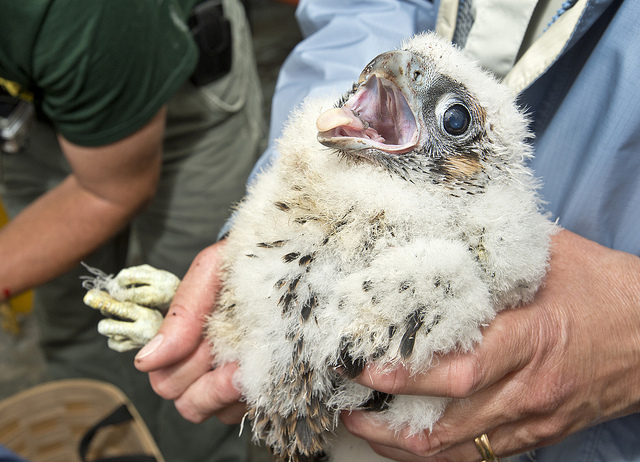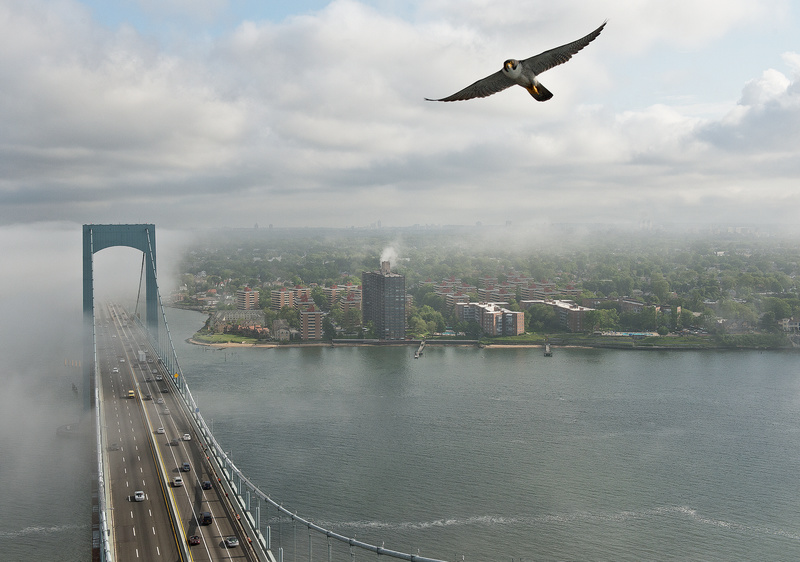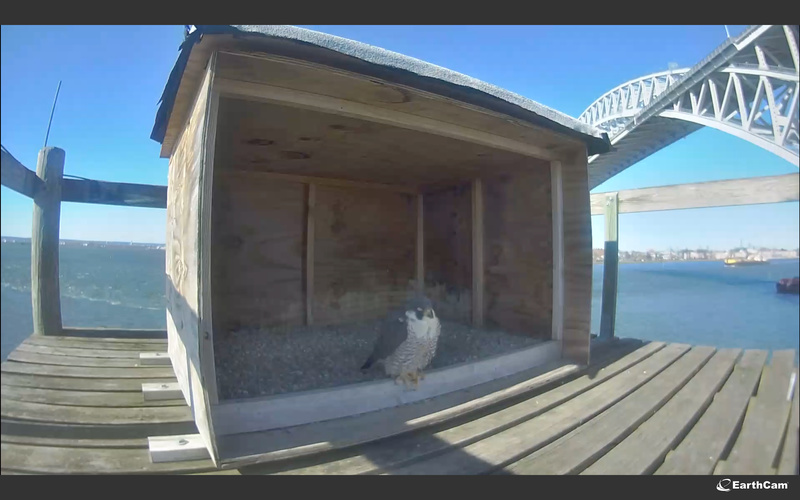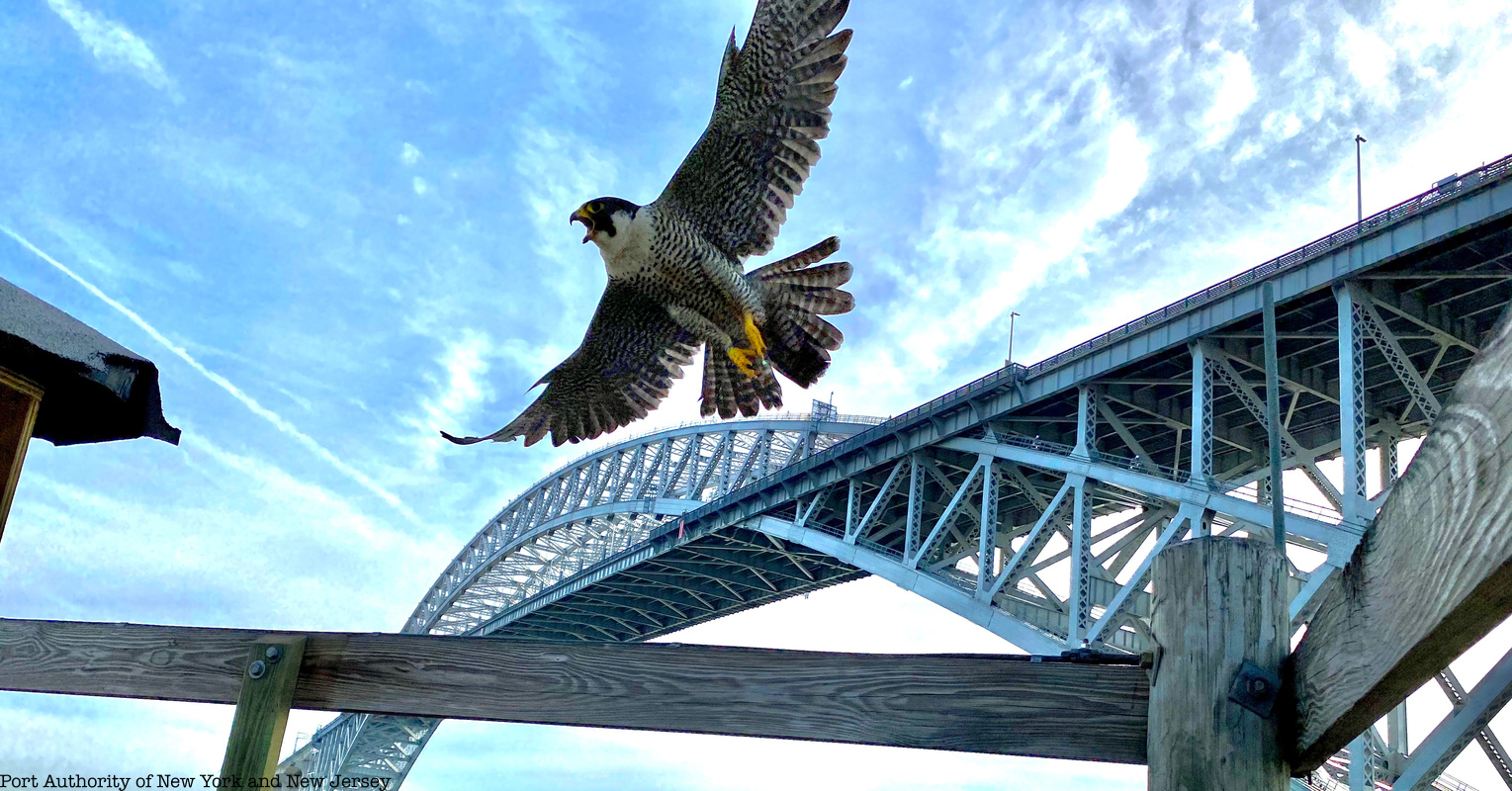A solar-powered live stream now offers an inside look at the lives of New York and New Jersey’s bridge falcons. For more than thirty years, the Port Authority of New York and New Jersey has helped provide peregrine falcons with safe places to hatch and raise their chicks. Now, you can watch a family of peregrine falcons grow under the Bayonne Bridge.

Peregrine falcons love the high vantage points afforded by New York City and New Jersey’s bridges. The endangered predators typically prefer to nest on cliff ledges but have adapted to urban life by nesting at places like the Brooklyn Bridge, George Washington Bridge, Metropolitan Life Building, and Riverside Church among other locations. From these high points, they can dive bomb toward their prey at up to 200 miles per hour.
When the peregrine falcon population fell dangerously low due to the use of dichlorodiphenyltrichloroethane (DDT) and other pesticides in 1989, the Port Authority stepped in to help. While release programs initiated by the Peregrine Fund helped to restore the population, the Port Authority provided safe shelters away from human activity where the falcons could lay eggs and raise their young. More than 200 chicks have hatched at the agency’s facilities across the region.

Each year at nesting sites near the Bayonne, Goethals, and George Washington bridges as well as the Outerbridge Crossing, new chicks are given tags and names. Some past names have included Locust, Edgewater, and Bayside, inspired by where the falcons lived. The tags, implemented in collaboration with New York City Department of Environmental Protection (NYC DEP), provide information on the birds’ movement, migration patterns, lifespan, and overall health.
The new live stream camera, which will be accessible until August 2024, is focused on a 45-foot-tall nesting tower. The Port Authority constructed the nest on an isolated island in the straits of the Kill van Kull, which runs under the Bayonne Bridge.

The livestream website provides some “Fast Falcon Facts,” and a breakdown of what types of activity you can expect to see throughout the year. From March to mid-April is nesting time, when female falcons primarily incubate eggs and the male falcon hunts. A representative of the PANYNJ told Untapped New Yor that the mama falcon recently laid her eggs and there appear to be two of them. Hatching usually happens between April and May, then in the early summer months, the baby falcons learn how to fly. Watch here on the Port Authority’s website!
Next, check out 15 of NYC’s Most Famous Animals






